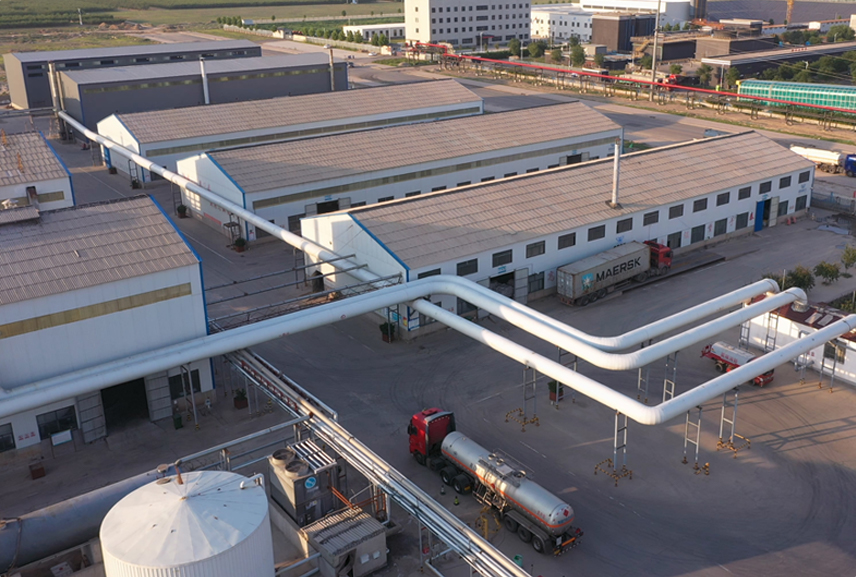HPMC's role in cosmetics mainly includes increasing viscosity, adjusting rheology, moisturizing, stability and improving surface activity.
HPMC, or hydroxypropyl methylcellulose, is a natural raw material with low irritation, environmental protection, non-toxicity and safety. Its application in cosmetics is mainly reflected in the following aspects: Increasing viscosity and viscosity: HPMC can form a stable colloid in aqueous solution, with high viscosity and viscosity, which can be used to increase the viscosity and viscosity of the product, and is suitable for products such as lotions, creams, and essences. Moisturizing effect: HPMC has good water solubility, can absorb water and swell and remain moist, and can play a moisturizing role in cosmetics. Stability: HPMC has good stability and can resist the influence of factors such as acid, alkali, high temperature and ions, making the product have better stability and durability. Increasing surface activity: The aqueous solution of HPMC has surface activity, which can increase the activity of the surface, and has the functions of protecting colloids, emulsification and relative stability. In addition, HPMC has the characteristics of thickening ability, salt resistance, pH stability, water retention, dimensional stability, excellent film-forming properties, and a wide range of enzyme resistance, dispersibility and adhesion, making it one of the indispensable ingredients in cosmetics.
| Item | Unit | Standard Specifications |
| Appearance | / | White powder,free flowing |
| Loss on drying | % | 4-6 |
| Residue | % | 3.5 |
| Methyl | % | 49-26 |
| Hydroxypropyl | % | 7-14 |
| Ph value(25C) | / | 6-8.5(neutral) |
| Gel temperature | ℃ | 60 degree/75 degree |
| degree of fineness | mesh | 100 mesh,>96%80 mesh,>100% |
| Apparent density | g/m3 | 0.4-0.6 |
| proportion | g/L | 420-520 |
| Surface Tension(2%solution) | dyn/cm | 42-56 |
| Water retention | % | ≥92 |
| Light Transmittance | % | 65-90 |
| Carbonization temperature | ℃ | 280-300 |
| Discoloration temperature | ℃ | 190-200 |
Related Products
HPMC (Hydroxypropyl Methyl Cellulose)
Better water retention and open time
Better strength development of the mortar
Improved workability
Increased adhesion to a variety of substrates
MHEC (Hydroxyethyl methyl cellulose)
High thickening efficiency and wide range of viscosity grades
Good compatibility
Excellent stability
Good protective colloid activity
RDP (Re-Dispersible Polymer Powder)
High flexibility, good film formation
High water resistance for increased open time
High hydrophobicity, ability to bridge cracks
Viscous texture and high workability
Related Application Categories
HPMC's role in cosmetics mainly includes increasing viscosity, adjusting rheology, moisturizing, stability and improving surface activity.
Anti-crack mortar is a mortar made by mixing anti-cracking agent, cement and sand with water in a certain proportion, which can meet certain deformation and remain crack-free.
Daily Chemical Detergent Grade HPMC Cellulose
Daily chemical Detergent grade hydroxypropyl methyl cellulose (HPMC) is a synthetic high molecular polymer prepared by chemical modification with natural cellulose as raw material.
Wall putty, also known as degreasing paint. This is a material used for preparing and smoothing walls before painting.
The working principle of laundry detergent is similar to that of traditional washing powder and soap, and the active ingredients are all surfactants.
Wall putty, also known as putty coating, is a decorative and functional smoothing material used for indoor or outdoor wall construction.
FAQ
Regarding the relationship between viscosity and temperature in HPMC (HPMC viscosity), what should be noted in practical applications?
What are the differences between HPMC and MC?
What are the formulations for interior and exterior wall putty powder?
What is the application of HPMC in putty powder, and what causes the formation of bubbles in putty powder?


Get in Touch
Interested in how our HPMC can enhance your personal care formulations? Contact us to request a free sample and experience the superior quality of our cellulose ether products.
Related News and Blogs
24
Aug., 2024
Let's meet Indonesia Coatings Exhibition 2024
The 10th Paintistanbul & Turkcoat Fair will be held at the Istanbul Exhibition Center in Turkey from May 8th...
19
Nov., 2021
What Causes A Cracked Putty Layer?
The one-off scraping thickness of the putty is directly proportional to the curing shrinkage strength, which increases in proportion to the tendency of the putty to crack.
04
Nov., 2021
Whether you are carrying out small repairs or building walls, knowing how to mix the mortar needs to be precise. If the mortar is too dry, the blocks will not stick together properly. If it is too wet, flowing mortar can spill out of the joints, resulting in wasted time and materials for clean-up.
25
Oct., 2021
The Effect of Winter Construction Temperature on Tile Adhesives
As we all know, tile adhesive is generally made from cement and mixed with various additives. It is mixed with water at the construction site and then applied to the wall or floor.

Get in Touch
Interested in how our HPMC can enhance your personal care formulations? Contact us to request a free sample and experience the superior quality of our cellulose ether products.